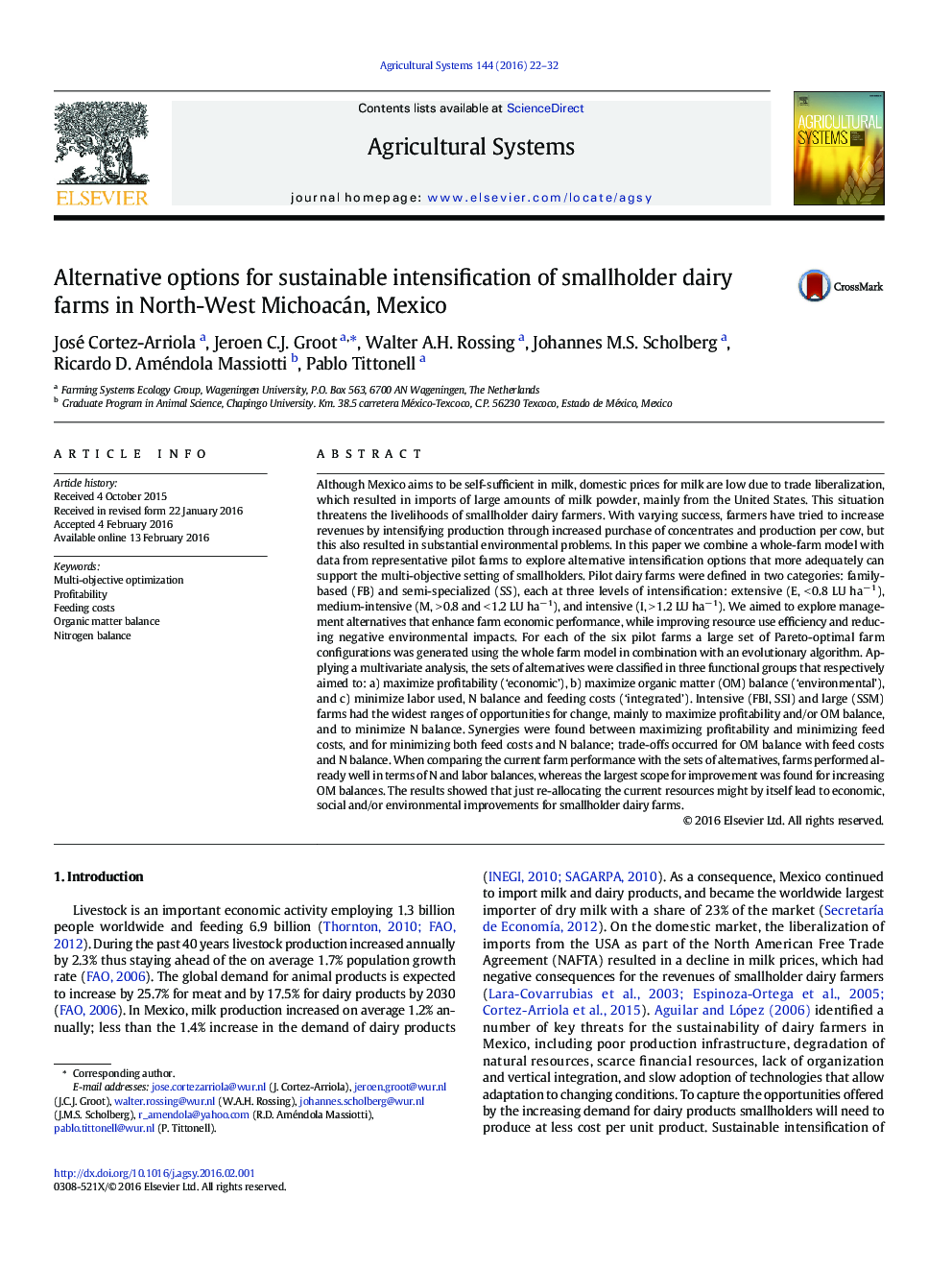| کد مقاله | کد نشریه | سال انتشار | مقاله انگلیسی | نسخه تمام متن |
|---|---|---|---|---|
| 4491137 | 1623226 | 2016 | 11 صفحه PDF | دانلود رایگان |

• We found sets of options for sustainable intensification of smallholder dairy farms.
• The sets span solution spaces for three economic and two environmental objectives.
• Solution spaces made trade-offs and synergies among farmer objectives explicit.
• In solution spaces we found three functional groups with a coherent change strategy.
• Re-allocating current farm resources could support improvement of farm performance.
Although Mexico aims to be self-sufficient in milk, domestic prices for milk are low due to trade liberalization, which resulted in imports of large amounts of milk powder, mainly from the United States. This situation threatens the livelihoods of smallholder dairy farmers. With varying success, farmers have tried to increase revenues by intensifying production through increased purchase of concentrates and production per cow, but this also resulted in substantial environmental problems. In this paper we combine a whole-farm model with data from representative pilot farms to explore alternative intensification options that more adequately can support the multi-objective setting of smallholders. Pilot dairy farms were defined in two categories: family-based (FB) and semi-specialized (SS), each at three levels of intensification: extensive (E, < 0.8 LU ha− 1), medium-intensive (M, > 0.8 and < 1.2 LU ha− 1), and intensive (I, > 1.2 LU ha− 1). We aimed to explore management alternatives that enhance farm economic performance, while improving resource use efficiency and reducing negative environmental impacts. For each of the six pilot farms a large set of Pareto-optimal farm configurations was generated using the whole farm model in combination with an evolutionary algorithm. Applying a multivariate analysis, the sets of alternatives were classified in three functional groups that respectively aimed to: a) maximize profitability (‘economic’), b) maximize organic matter (OM) balance (‘environmental’), and c) minimize labor used, N balance and feeding costs (‘integrated’). Intensive (FBI, SSI) and large (SSM) farms had the widest ranges of opportunities for change, mainly to maximize profitability and/or OM balance, and to minimize N balance. Synergies were found between maximizing profitability and minimizing feed costs, and for minimizing both feed costs and N balance; trade-offs occurred for OM balance with feed costs and N balance. When comparing the current farm performance with the sets of alternatives, farms performed already well in terms of N and labor balances, whereas the largest scope for improvement was found for increasing OM balances. The results showed that just re-allocating the current resources might by itself lead to economic, social and/or environmental improvements for smallholder dairy farms.
Journal: Agricultural Systems - Volume 144, May 2016, Pages 22–32